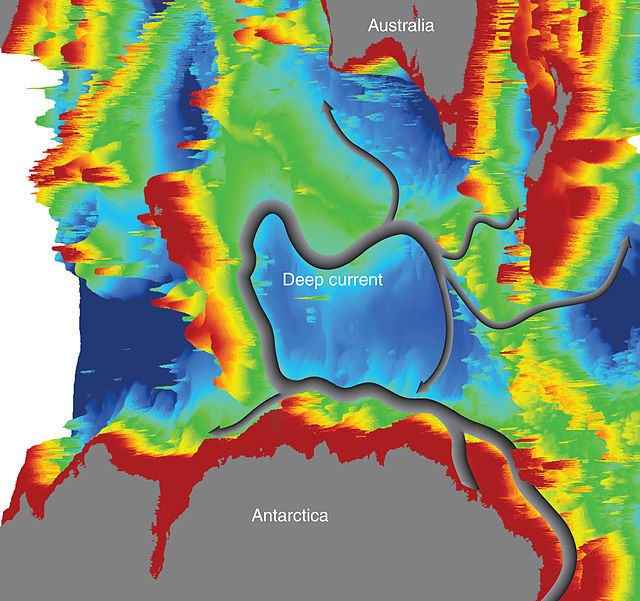The Kuroshio Current , also known as the Black Current or Japan Current is a north-flowing, warm ocean current on the west side of the North Pacific Ocean basin. It was named for the deep blue appearance of its waters. Similar to the Gulf Stream in the North Atlantic, the Kuroshio is a powerful western boundary current that transports warm equatorial water poleward and forms the western limb of the North Pacific Subtropical Gyre. Off the East Coast of Japan, it merges with the Oyashio Current to form the North Pacific Current.
The Kuroshio Current, as idealized from space. The resulting circulation and eddying demonstrate the mixing caused by the input of warm equatorial water poleward. Image by NASA Goddard Space Flight Center.
Western Pacific Ocean tropical cyclone tracks compiled from 1980 to 2005
Annual average chlorophyll concentrations are shaded, and annual average surface (A) nitrate and (B) phosphate concentrations are contoured. The Kuroshio Current transports nitrate and phosphate from the South China Sea, increasing productivity.
The Oyashio Current colliding with the Kuroshio Current near Hokkaido. When two currents collide, they create eddies. Phytoplankton growing in the surface waters become concentrated along the boundaries of these eddies, tracing out the motions of the water.
An ocean current is a continuous, directed movement of seawater generated by a number of forces acting upon the water, including wind, the Coriolis effect, breaking waves, cabbeling, and temperature and salinity differences. Depth contours, shoreline configurations, and interactions with other currents influence a current's direction and strength. Ocean currents are primarily horizontal water movements.
The bathymetry of the Kerguelen Plateau in the Southern Ocean governs the course of the Kerguelen deep western boundary current, part of the global network of ocean currents.
Coupling data collected by NASA/JPL by several different satellite-borne sensors, researchers have been able to "break through" the ocean's surface to detect "Meddies" – super-salty warm-water eddies that originate in the Mediterranean Sea and then sink more than a half-mile underwater in the Atlantic Ocean. The Meddies are shown in red in this scientific figure.
A recording current meter







